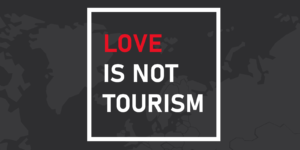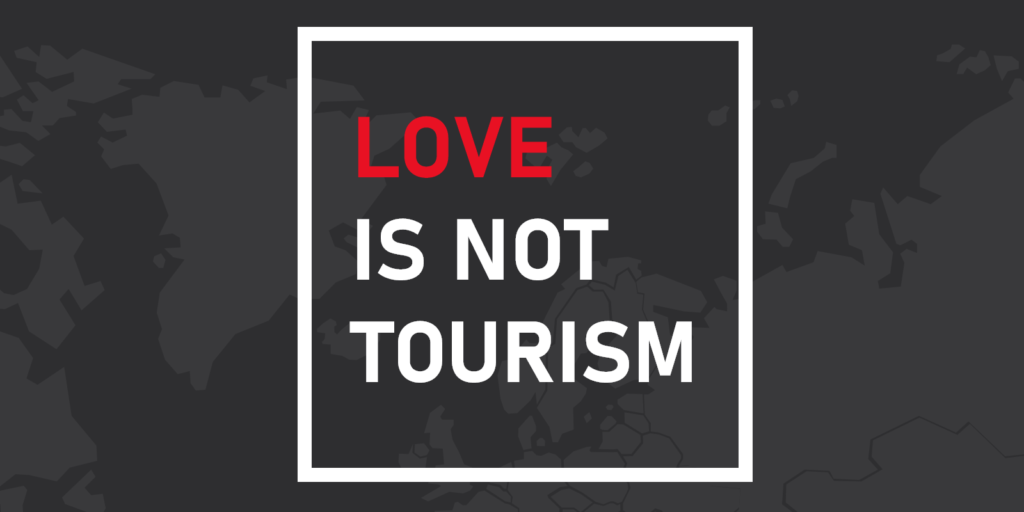By Jordan Carlson
Eagle Pass, Texas has become the latest battleground in the perennial struggle between the federal government and the states.[1] In a January 22, 2024 order, the Supreme Court vacated an injunction that had prevented federal agents from cutting wire placed on the Texas-Mexico border by Texas.[2] The case is one of several recent disputes between Texas and the federal government.[3] However, the Supreme Court’s laconic order vacating the injunction, consisting of only fifty-five words,[4] is unlikely to shed any light on the constitutional concerns that have emerged.
Federal Prerogatives Along the Border
Control over the borders of the United States is traditionally viewed as a fundamental federal function.[5] The Constitution expressly grants the federal government the ability to establish rules regarding citizenship,[6] the power to regulate commerce with foreign nations,[7] and broad authority over foreign affairs.[8] As recently as 2012, the Supreme Court held that “the Government of the United States has broad, undoubted powers over the subject of immigration and the status of” noncitizens.[9] Consequently, in a conflict between a federal immigration law and a state law, the status quo says the conflicting state law must yield to federal authority.[10]
To enforce its immigration policies, Congress established the federal Border Patrol, a law enforcement agency under the control of the Department of Homeland Security.[11] Border Patrol agents are empowered by Congress under 8 U.S.C. 1357(a)(3), to access any private land within twenty-five miles of an international boundary for the purpose of patrolling the border and executing its functions.[12]
Operation Lone Star
In 2021, Texas launched “Operation Lone Star” to aid federal authorities, including the Border Patrol, in securing the Texas-Mexico border.[13] The operation included the placement of concertina wire along the border on known entry points for illegal migrants, including a twenty-nine-mile stretch near Eagle Pass, Texas,[14] which the state claims is an effective deterrent to curb such illegal crossings.[15]
However, federal authorities are concerned that the wire restricts the federal government’s access to sections of the border.[16] The wire stretches along the riverbank on the U.S. side of the Rio Grande, and runs across gates and boat ramps which federal authorities use to access to the river and surrounding areas.[17] The federal government claims the wire hinders Border Patrol agents in their duties and prevents them from rendering emergency aid to endangered migrants.[18] As a result, Border Patrol has adopted a practice of cutting the wire in the course of its duties, much to Texas’s chagrin.[19]
On October 24, 2023 Texas filed an action against the United States for conversion and trespass of chattels for damage to its concertina wire fences.[20] The district court found that Texas had a likelihood of success on its claims as the federal government lacked the right to cut the wire, and granted a temporary restraining order preventing the Border Patrol from further damaging it.[21] However, the district court later denied Texas’s request for preliminary injunction on grounds that the federal government possessed sovereign immunity against Texas tort law.[22] The Fifth Circuit reversed on appeal and enjoined the federal government from “damaging, destroying, or otherwise interfering with Texas’s [concertina] wire fence.”[23] The federal government soon after applied to the Supreme Court to vacate the injunction.[24]
Arguments Presented to the Supreme Court
In support of its application to vacate, the federal government argued that 8 U.S.C. 1357(a)(3) requires the Border Patrol to have access to the border, including the areas around Eagle Pass.[25] Because the Supremacy Clause prohibits state law from restraining federal agents from carrying out their federally authorized activities,[26] Texas cannot use its state tort law to restrict Border Patrol agents from accessing the border.[27]
In opposition, Texas argued that no Supremacy Clause issue was presented in this case, as there is no conflict between Texas’s immigration laws and the immigration laws of the federal government.[28] Rather, Texas is asserting its rights as the property owner of the destroyed concertina wire.[29] While federal law preempts state law under the Supremacy Clause, the Supremacy Clause does not permit the federal government to take any unbridled action to achieve its goals.[30] Texas argues that to allow federal agents to needlessly destroy Texas’s property under the pretext of federal law would permit the government to destroy any obstruction within twenty-five miles of an international border at its convenience.[31]
The Supreme Court’s Lackadaisical Order
This case gave the Supreme Court an opportunity to analyze whether a state law may lawfully, though incidentally, impede the functions of a federal agency carrying out its congressionally granted responsibilities.[32] A Texas victory would have provided state’s with a potent tool to use against the federal government on matters of immigration.
However, the Supreme Court issued a terse order simply vacating the Fifth Circuit’s injunction with no further explanation.[33] While the Border Patrol is once again permitted to cut Texas’s wire, the 5-4 split on the order may indicate the Court’s wariness over the outcome.[34] In the context of the Texas’s other pending battles with the federal government,[35] Greg Abbott’s novel argument on the Constitution’s Invasion Clause,[36] and the recent impeachment attempt of the Secretary of Homeland Security,[37] perhaps the Supreme Court is simply saving its breath for other matters in the near future.
[1] See Valerie Gonzalez, How a Small Texas City Landed in the Spotlight During the State-Federal Clash Over Border Security, AP News (Feb. 3, 2023 6:31PM) https://apnews.com/article/abbott-biden-border-convoy-eagle-pass-f26d91bdef9802570c5aa9752598622f.
[2] Dep’t. of Homeland Sec. v. Texas, No. 23A607, 2024 U.S. LEXIS 577, at *1 (U.S. Jan. 22, 2024).
[3] See United States v. Abbott, 87 F.4th 616 (5th Cir. 2023) (regarding a floating barrier Texas placed in the Rio Grande River); see also United States v. Texas, No. 1:24-cv-00008 (W.D. Tex. filed Jan. 3, 2024) (challenging Texas statute allowing Texas courts to deport illegal immigrants).
[4] Dep’t of Homeland Sec. v. Texas, No. 23A607, 2024 U.S. LEXIS 577, at *1 (U.S. Jan. 22, 2024).
[5] See Arizona v. United States, 567 U.S. 387, 394 (2012) (quoting Toll v. Moreno, 458 U.S. 1, 10 (1982)); see also Mathews v. Diaz, 426 U.S. 67, 79–80 (1976); see also Hines v. Davidowitz, 312 U.S. 52, 62–63 (“[T]he supremacy of the national power in the general field of foreign affairs, including the power over immigration, naturalization and deportation, is made clear by the Constitution, was pointed out by the authors of the Federalist in 1787, and has since been given continuous recognition by this Court.”).
[6] U.S. Const. art. I, §8, cl. 4.
[7] U.S. Const. art. I, §8, cl. 3.
[8] U.S. Const. art. I, §8, cl. 11; U.S. Const. art. II, §2.
[9] Arizona v. United States, 567 U.S. 387, 394 (2012).
[10] Hines v. Davidowitz, 312 U.S. 52, 66 (1941) (“[T]he regulation of aliens is so intimately blended and intertwined with responsibilities of the national government that where it acts, and the state also acts on the same subject, ‘the act of Congress, or the treaty, is supreme; and the law of the State . . . must yield to it.’”).
[11] 1924: Border Patrol Established, United States Customs and Border Protection (Aug. 3, 2023), https://www.cbp.gov/about/history/1924-border-patrol-established.
[12] See 8 U.S.C. 1357(a)(3).
[13] State v. Dep’t. of Homeland Sec., 88 F.4th 1127, 1130 (5th Cir. 2023).
[14] Id. at 1131.
[15] Response in Opposition to the United States’s Application to Vacate Injunction at 3–4, Dep’t. of Homeland Sec. v. Texas, No. 23A607, 2024 U.S. LEXIS 577 (U.S. Jan. 22, 2024) (“[T]he wire serves as a deterrent – an effective one at that . . . the wire was so successful that illegal border crossings dropped to less than a third of their previous levels.”).
[16] Brief for Appellees at 21, State v. Dep’t of Homeland Sec., 88 F.4th 1127 (5th Cir. 2023) (No. 23-50869).
[17] Id. at 20.
[18] Id.
[19] Response in Opposition to the United States’s Application to Vacate Injunction at 3, Dep’t of Homeland Sec. v. Texas, No. 23A607, 2024 U.S. LEXIS 577 (U.S. Jan. 22, 2024).
[20] Texas v. Dep’t. of Homeland Sec., No. DR-23-CV-00055-AM, 2023 U.S. Dist. LEXIS 197502, at *3. (W.D. Tex. Oct. 30, 2023).
[21] Id. at *7.
[22] Id. at *3.
[23] State v. Dep’t. of Homeland Sec., 88 F.4th 1127, 1130 (5th Cir. 2023).
[24] Application to Vacate the Injunction Pending Appeal at 1–2, Dep’t. of Homeland Sec. v. Texas, No. 23A607, 2024 U.S. LEXIS 577 (U.S. Jan. 22, 2024).
[25] Application to Vacate the Injunction Pending Appeal at 2, Dep’t. of Homeland Sec. v. Texas, No. 23A607, 2024 U.S. LEXIS 577 (U.S. Jan. 22, 2024).
[26] Id.
[27] Id.
[28] Response in Opposition to the United States’s Application to Vacate Injunction at 24-25, Dept. of Homeland Sec. v. Texas, No. 23A607, 2024 U.S. LEXIS 577 (U.S. Jan. 22, 2024).
[29] Id. at 25.
[30] Id.
[31] Id.
[32] Application to Vacate the Injunction Pending Appeal at 24–26, Dep’t. of Homeland Sec. v. Texas, No. 23A607, 2024 U.S. LEXIS 577 (U.S. Jan. 22, 2024).
[33] Dep’t. of Homeland Sec. v. Texas, No. 23A607, 2024 U.S. LEXIS 577, at *1 (U.S. Jan. 22, 2024).
[34] Jordan Rubin, Supreme Court Splits 5-4 Against Texas on Border Control, Razor Wire, MSNBC (Jan. 22, 2024 4:35PM), https://www.msnbc.com/deadline-white-house/deadline-legal-blog/supreme-court-texas-border-razor-wire-rcna135146.
[35] See generally United States v. Abbott, 87 F.4th 616 (5th Cir. 2023); see also United States v. Texas, No. 1:24-cv-00008 (W.D. Tex. filed Jan. 3, 2024).
[36] Rafael Bernal, Abbott Doubles Down on Border ‘Invasion’ Declaration After Supreme Court Blow, The Hill (Jan. 24, 2024, 4:08 PM), https://thehill.com/latino/4427387-abbott-texas-border-invasion-supreme-court-immigration/.
[37] Kaia Hubbard, The House Just Impeached Alejandro Mayorkas. Here’s What Happens Next., CBS News (Feb. 14, 2024), https://www.cbsnews.com/news/house-impeached-alejandro-mayorkas-what-happens-next/.



